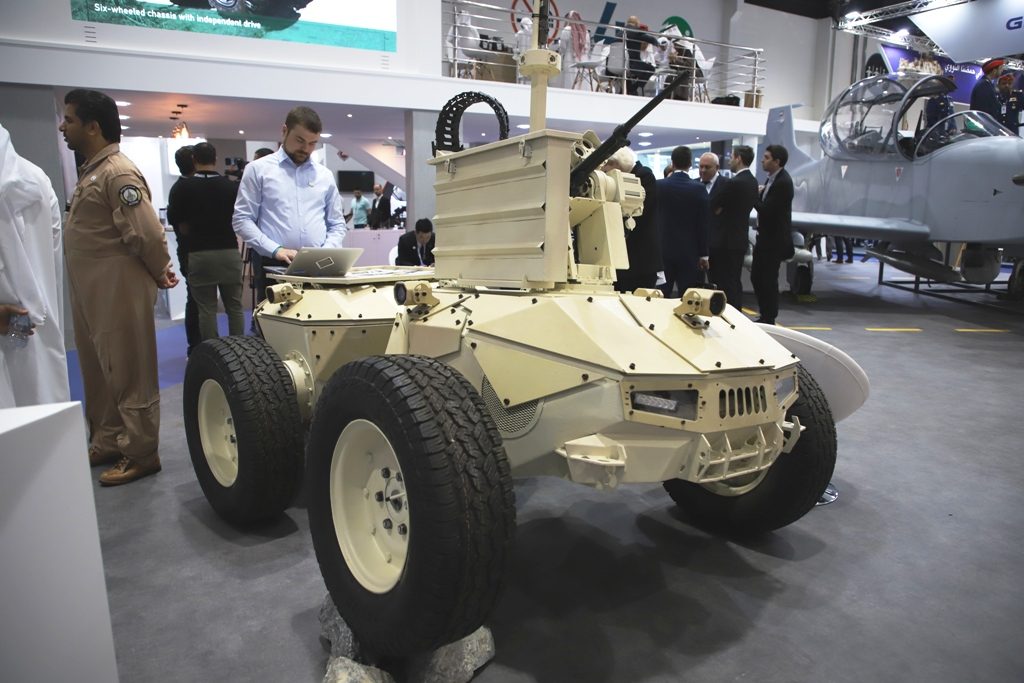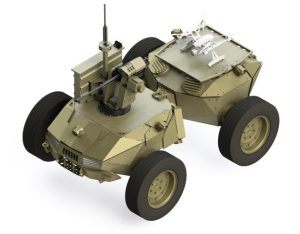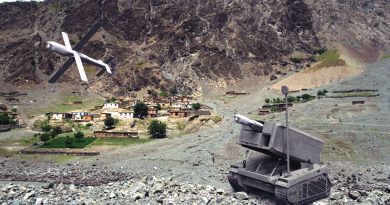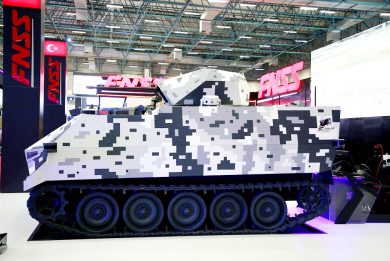
IDEX 2019: UGVs from Ukraine
Among the numerous UGVs seen at IDEX one had a quite peculiar architecture; it was visible in the Calidus stand, although its country of origin was Ukraine, an agreement between the two companies providing it the exhibiting space between the UAE company main products, the Wahash 8×8 armoured vehicle and the B250 light attack/trainer aircraft.

The designer and producer of the articulated 4×4 wheeled UGV is Roboneers, a company based in Lviv, Ukraine, which was formed in 2013 and started designing and manufacturing remotely controlled weapon stations, its product in this field being the Shabyla, which can carry a 7.62 mm machine gun with up to 1,000 rounds, or a 40 mm automatic grenade launcher, or two antitank missiles, as well as up to eight smoke grenade launchers, at a weight of 130 kg with ammunition. At IDEX this was seen mounted on the company armed UGV, the Fahd. Until now Roboneers produced three prototypes of UGV, the third being the Fahd, which is dedicated to reconnaissance missions and usually features the Shabyla RCWS and an ISR suite, which can also be in the form of a UAV, the company having developed a quadcopter tactical drone.
The key element of the Fahd is its architecture, the vehicle being made of two modules each carrying one axle, the two modules being linked by a turning joint that allows to have the four wheels always in contact with the terrain, considerably increasing mobility while allowing adopting hard suspensions that concur in increasing fire accuracy, the 7.62 mm weapon being able to deliver fire with an aiming precision of less than 0.2 MOA according to the company. Each wheel is moved by an electric motor with epitrochoid harmonic drive ensuring a high torque; the front module hosts a 15 kW diesel generator while Lithium-Ion batteries are located at the rear, this hybrid configuration allowing up to 8-10 hours operations, only-electric endurance being of 1-1.5 hours. Maximum speed is 20 km/h, the Fahd being able to cope with a 30° (55%) front slope and a 33° (60%) side slope. Each module has three full HD near-IR CMOS cameras, two on the sides and one on the rear or front, providing 360° coverage, the radio link working in the 4.9-6.1 GHz band with a 100 Mbps throughput and a range of 20 km, images being received with a 0.2 seconds delay. Radios are provided by Aselsan of Turkey.

The overall weight when fitted with the Shabyla RCWS is of 1,100 kg, which leaves a further 200 kg payload when used in off-road operations. Part of it can be used to install add-on armour that makes the UGV immune to 7.62 mm rounds. The overall dimensions of the Fahd are 2,564 x 1,720 x 945 mm when not fitted with the RCWS. Roboneers has produced also an unarmed UGV, the Jamal, which adopts a similar architecture but can carry a 600 kg payload on the front and rear platforms and to up to 1 tonne. This UGV is currently undergoing trials with the Ukrainian Army, while the company has strong hopes that the nation’s military will also adopt the Fahd.
Photos by Paolo Valpolini and Roboneers



